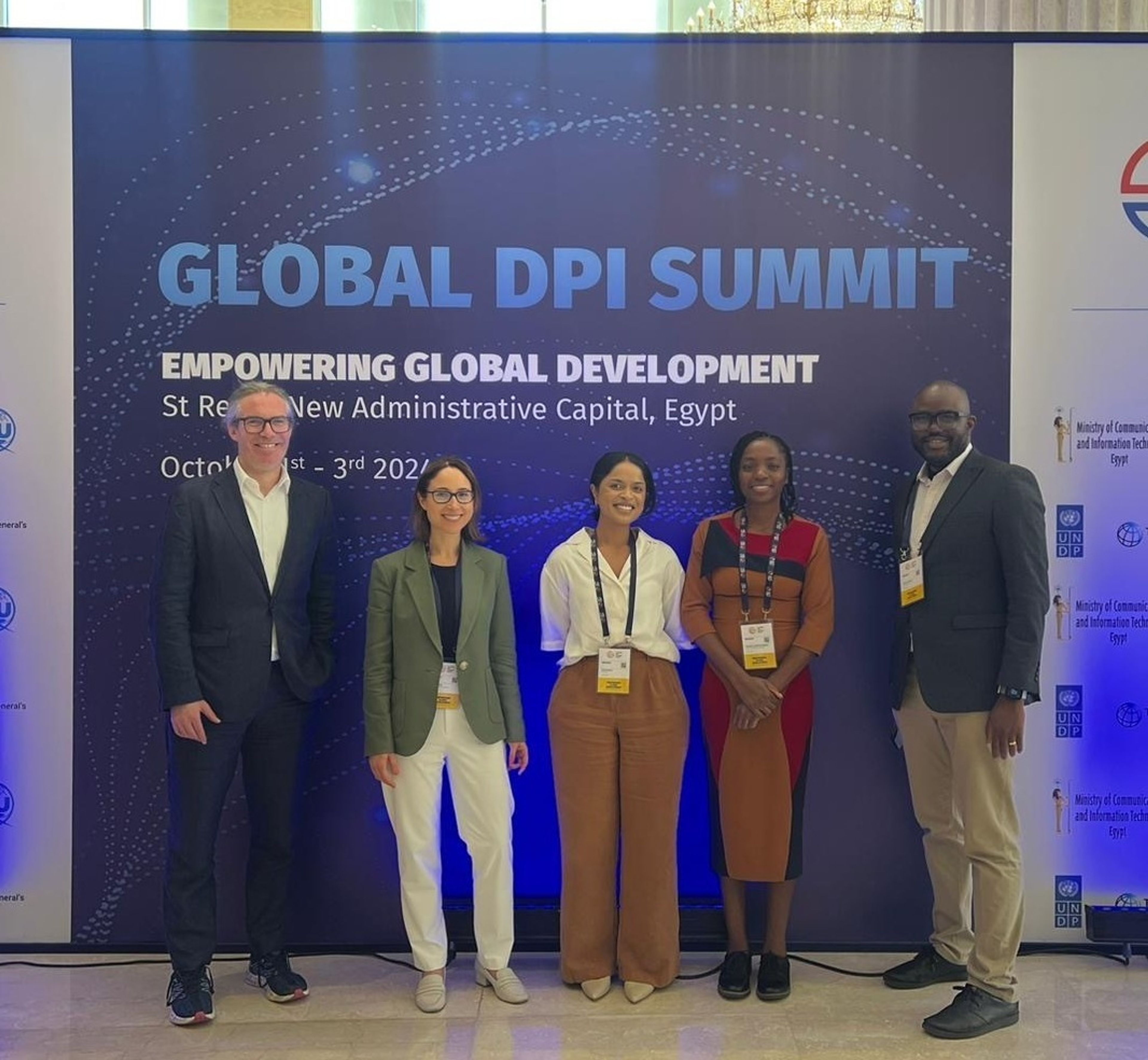Last week five of us from Public Digital – Blessing, Sechi, Abisola, Lauren and I – attended the inaugural Global Digital Public Infrastructure Summit in Cairo.
We were delighted to be among representatives of 101 different countries including ministers, ambassadors, civil servants, civil society groups, and our fellow private sector members discussing how to accelerate the deployment, uptake and impact of digital infrastructure.
The event showed that in the 18 months since I talked about Digital Public Infrastructure having landed high on the global political agenda the topic has shown no signs of slowing down. The need for inclusive digital infrastructure globally – things like safe and simple ways of making and receiving payments – has never been clearer.
The funding, commercial and delivery models that have been used in western nations are far from perfect, and definitely won’t scale globally. But with the right investments it is possible to create components and practices that let us do more with less: Accelerating the impact of small teams, harnessing the private sector more effectively and creating new opportunities for innovation.
At the summit, Public Digital was pleased to participate in a panel on measuring impact, as well as convene a discussion on how Africa’s digital economy can enable the continent’s leadership of its digital transformation. Lauren and Blessing will write more about both of those and what we learned from them.
But we were just as pleased to be part of the hallway track, working with friends and colleagues from around the world to figure out what’s next.
We look forward to building on the summit’s momentum with our upcoming blog posts, but here we share a few of our takeaways on the current conversation around DPI:
We need to keep users front and centre
Discussions of building blocks and infrastructure too easily drift away from talking about value for users. We welcomed the rallying cry of Pramod Varma, co-chair of the Centre for Digital Public Infrastructure and formerly Chief Architect of India’s Aadhaar, to put users at the centre when considering data, and we need to keep that same focus if we’re to ensure investments in digital infrastructure have tangible, measurable benefits for people. That means thinking about services and infrastructure at the same time.
Both the supply and demand sides of developing and implementing DPI need to balance local understanding and global perspective.
We need to invest in building, supporting and involving local teams
There’s a strong appetite for ensuring that inclusion in digital public infrastructure isn’t purely about beneficiaries, but also more local shaping of the form it takes and the way it’s implemented. Both the supply and demand sides of developing and implementing DPI need to balance local understanding and global perspective, which means doing more to stimulate local government teams and supply chains. Until recently, that’s a consideration which has often been overlooked.
We need to reconsider the ‘how’ of building and implementing DPI
It’s vital to focus just as much on the “how” as the “what.” It’s good to see more private sector players getting involved, but we’ll need to see different business models and modes of collaboration to deliver DPI at pace and scale. It’s important to talk about the institutions that can house and drive DPI projects, which is why a significant part of our work with international governments involves helping to establish and champion those institutions, and reimagine their ways of working. As Public Digital may have said before, we need to be Radical in the How.
The five of us have returned from Cairo enthused and energised. We’re very grateful to co-develop and the other partners who brought together such a rich group of people for an important next step in the conversation.

